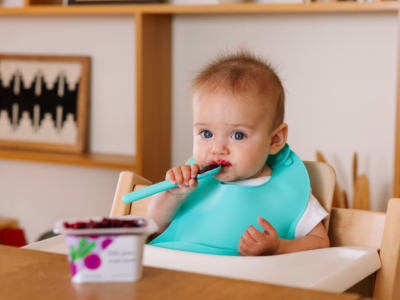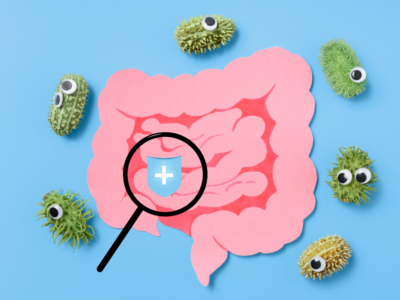Originally published on One Medical by Devin Collins.
Clinical Editors: Sara Huberman Carbone, MD and Anh Le, MD.
Over the last few weeks, the U.S. has seen a surge in cases of respiratory syncytial virus or RSV, among infants and children, in some cases even in adults. With hospitalizations on the rise, many parents are left wondering how to best protect their kids. Here’s everything you need to know about the virus, the recent spike in cases, and keeping your family safe and healthy:
What is RSV?
RSV is a respiratory virus that generally presents during the fall and winter seasons. It affects the lungs and breathing passages and typically causes mild, cold-like symptoms. It’s so common that virtually all children have at least one RSV infection by the time they are 2 years old. While anyone can be infected and most cases resolve on their own, RSV can cause serious illness, especially for infants, young children, older adults, and those who are immunocompromised.
Why is RSV on the rise right now?
Though RSV typically spreads during cold and flu season, the number of cases that have been reported in the last few weeks is unseasonably high. Public experts believe this could be the result of people resuming their pre-pandemic activities this season and taking fewer COVID-19 precautions. After two years of masking, staying home, and practicing other COVID-19 mitigation measures, many kids have not had the exposure to new germs and viruses needed to build natural immunity. Now, as they and others enter the world and resume social activities, their immune systems are not prepared to fight viruses like RSV when they encounter them.
How is it transmitted?
RSV is transmitted through respiratory droplets either through close contact with someone who has the virus or by contamination with an infected surface. RSV can persist on surfaces for several hours and for about 30 minutes on hands. People with RSV are usually contagious for 3 to 8 days, but some infants and people with weakened immune systems can be contagious for as long as 4 weeks, even if they’ve stopped showing symptoms.
What are the symptoms?
People with RSV typically begin to experience symptoms 4 to 6 days after exposure. Common symptoms include:
- Runny nose
- Cough
- Sneezing
- Wheezing
- Fever
- Decrease in appetite
Sometimes — particularly in infants and young children — RSV can progress into more severe conditions like bronchiolitis (inflammation of the small airways in the lungs) or pneumonia (infection of the lungs), which can lead to symptoms of respiratory distress. In fact RSV is the most common cause of bronchiolitis and pneumonia in children younger than 1 year of age.
If you notice more severe symptoms in your child , particularly persistent fever, decreased oral intake, or increased trouble breathing (such as pulling in the chest or neck, grunting, or wheezing), reach out to your child’s primary care provider.
How can you prevent RSV?
While researchers and medical companies are working to develop RSV vaccines, none are available yet. Fortunately, many of the same measures we take to prevent the spread of COVID-19 and the flu can protect against RSV. These include:
- Avoid close contact with people who are sick.
- Keep children home from daycare, school, activities, or from close contact with other people if your child becomes sick with respiratory symptoms. Be mindful of others in your household as well.
- Cover coughs or sneezes with a tissue, then throw the tissue in the trash.
- Wash your hands often with soap and water for at least 20 seconds, and if soap and water aren’t available, use an alcohol-based hand sanitizer. A trick to encouraging 20 seconds of handwashing is having your child wash a toy while washing their hands or singing one of their favorite songs. Singing “Happy Birthday” twice, for instance, will indicate when they can stop. You should encourage your child to wash their hands upon entering the house, after using the restroom, and before eating.
- Avoid touching eyes, nose, and mouth with unwashed hands and encourage your child to do the same.
- Clean and disinfect frequently touched toys and surfaces with a householder cleaner daily. This includes tables, doorknobs, light switches, remotes, handles, desks, toilets, phones, and tablets.
For young children who are considered high risk, prophylactic treatment is often recommended in the beginning of the season with the aim of preventing severe diseases.
How is RSV treated?
At this time, there is no antiviral medication for treating RSV specifically. However, most RSV infections resolve on their own in a week or two. In most cases your child should stay home and avoid contact with other people except to get medical care. Your child should rest, stay hydrated and take a fever-reducing medicine like ibuprofen or acetaminophen (Tylenol) if they need to. It’s important to note that children under 19 years old should not use aspirin unless directed to do so by their medical provider. And remember, antibiotics won’t help your child recover from RSV.
In the case of severe infection, your child may need to be evaluated in a hospital setting in order to start more emergent supportive care and monitoring, when needed. We are here for you and want to keep all our families as healthy as possible during this cold season. Have more questions about RSV? Our primary care team is here to help. At One Medical, we aim to provide exceptional care designed around your child’s unique health needs. Sign up today to book a same or next day appointment — in person or over video — through our app.



